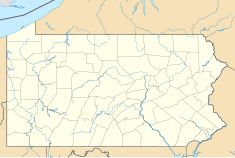Independence National Park
| Independence National Historical Park | |
|---|---|

Chestnut Street facade of Independence Hall
|
|
| Location | Bounded by Chestnut, Walnut, 2nd, and 6th Sts., Philadelphia, Pennsylvania |
| Coordinates | 39°56′52″N 75°08′53″W / 39.947778°N 75.148056°WCoordinates: 39°56′52″N 75°08′53″W / 39.947778°N 75.148056°W |
| Area | 55.42 acres (22.43 ha) |
| Architect | Strickland, William; Et al. |
| Architectural style(s) | Colonial, Georgian, Federal |
| Visitors | 3,572,770 (in 2011) |
| Governing body | National Park Service |
| Website | Independence National Historical Park |
| Designated | October 15, 1966 |
| Reference no. |
66000683 |
| Designated | June 28, 1948 |
66000683
Independence National Historical Park is a United States National Park in Philadelphia that preserves several sites associated with the American Revolution and the nation's founding history. Administered by the National Park Service, the 55-acre (22 ha) park comprises much of Philadelphia's most-visited historic district. The park has been nicknamed "America's most historic square mile" because of its abundance of historic landmarks, and the park sites are located within the Old City and Society Hill neighborhoods of Philadelphia.
The centerpiece of the park is Independence Hall, a UNESCO World Heritage Site, where the Declaration of Independence and the United States Constitution were debated and adopted in the late 18th century. Independence Hall was the principal meetinghouse of the Second Continental Congress from 1775 to 1783 and the Constitutional Convention in the summer of 1787. Across the street from Independence Hall, the Liberty Bell, an iconic symbol of American independence, is displayed in the Liberty Bell Center. The park contains other historic buildings, such as the First Bank of the United States, the first bank chartered by the United States Congress, and the Second Bank of the United States, which had its charter renewal vetoed by President Andrew Jackson as part of the Bank War. Carpenters' Hall, the site of the First Continental Congress, is located on Park property as well, however the building is privately owned and operated. It also contains City Tavern, a recreated colonial tavern, which was the favorite of the delegates, and John Adams felt was the finest tavern in all America.
...
Wikipedia

